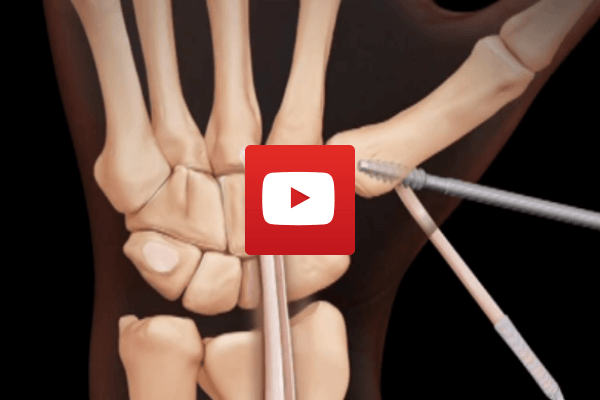Arthritis
Arthritis in the Hand,
Wrist & Fingers
Multiple small joints work together within the hand and wrist to provide our range of motion. When one or more of these joints are damaged, the condition is classified as arthritis. Although there are over 100 forms of arthritis, the types that most commonly affect the hand or wrist are osteoarthritis and rheumatoid arthritis.
Any joint in the fingers or wrist can be affected by arthritis. The condition frequently results in pain for those affected and may also result in a reduced range of motion as joints become stiff and sore. Left untreated, arthritis can eventually result in joint deformity that cripples the hand and leads to functional loss.
For people affected by arthritis in the hand or wrist, many daily activities become increasingly difficult. Movements that require fine motor skills, such as tying shoelaces, gripping objects and turning keys, can become harder, affecting the sufferer’s independence.

What causes Arthritis?
There is no single answer to this question – different types of arthritis have different causes, and these causes often act together.
That being said, the most common forms of arthritis are the result of ‘wear and tear’ of the joints, trauma or immune system dysfunction. Some people are genetically predisposed to develop the disease due to their genetics, whereas other cases are triggered by environmental conditions such as overuse or injury.
Osteoarthritis is the most common form of arthritis and is the result of joint cartilage wearing away over time. Rheumatoid arthritis is an immune disease that causes the joint lining (synovium) to swell, which causes pain and stiffness in the joint.
Symptoms of Arthritis
Arthritis in the hand or wrist share a range of symptoms, including:
- Pain and stiffness, often accompanied by a burning sensation
- A red and/or swollen appearance after use
- The affected joint/s feeling warm to the touch
- Weakness of the hand or wrist due to pain and loss of motion
- Diminished ability to grip and pinch
- A grinding, clicking or cracking sound when moving the joint
- In advanced cases, joint/s may appear larger than normal
If arthritis is affecting the ends of the fingers, small mucous cysts within the joints may cause dents or ridges in the nail plate to appear.
How is Arthritis of the Hand or Wrist Diagnosed?
If you are experiencing symptoms of arthritis, you may want to visit Orthopaedic surgeon Dr James McLean in one of his Adelaide or Darwin practice locations. During your consultation, Dr McLean will physically examine your hands and ask you questions about your symptoms and family history. X-rays are commonly used to diagnose arthritis. In cases of rheumatoid arthritis, a blood test may also be used.
Can you get Arthritis in your hand at a young age?
Arthritis can affect people of any age but is more common in people over the age of 60. It’s estimated that over 80% of people over the age of 75 have arthritic joint damage. Although arthritis affects both men and women, women are more likely to develop the disease.
Treatment Options for Arthritis of the Hand or Wrist
A variety of treatment options exist to aid the management of arthritic conditions. Treatment options for arthritis of the hand or wrist depend on the disease’s progression, how many joints are involved, your age and activity level and your personal lifestyle goals.
How Dr James McLean can help
Dr James McLean provides consultation and various treatments for a wide variety of hand and wrist conditions in Adelaide.
With his extensive experience in treating upper limb conditions, he works with his patients to create tailored treatment plans which yield the best possible outcomes for their injuries.
Click here for more information on other conditions involving the shoulder, hand, wrist, and elbow which Dr James McLean has a special interest in treating.
Once you have a referral…
Book your consultation here.


